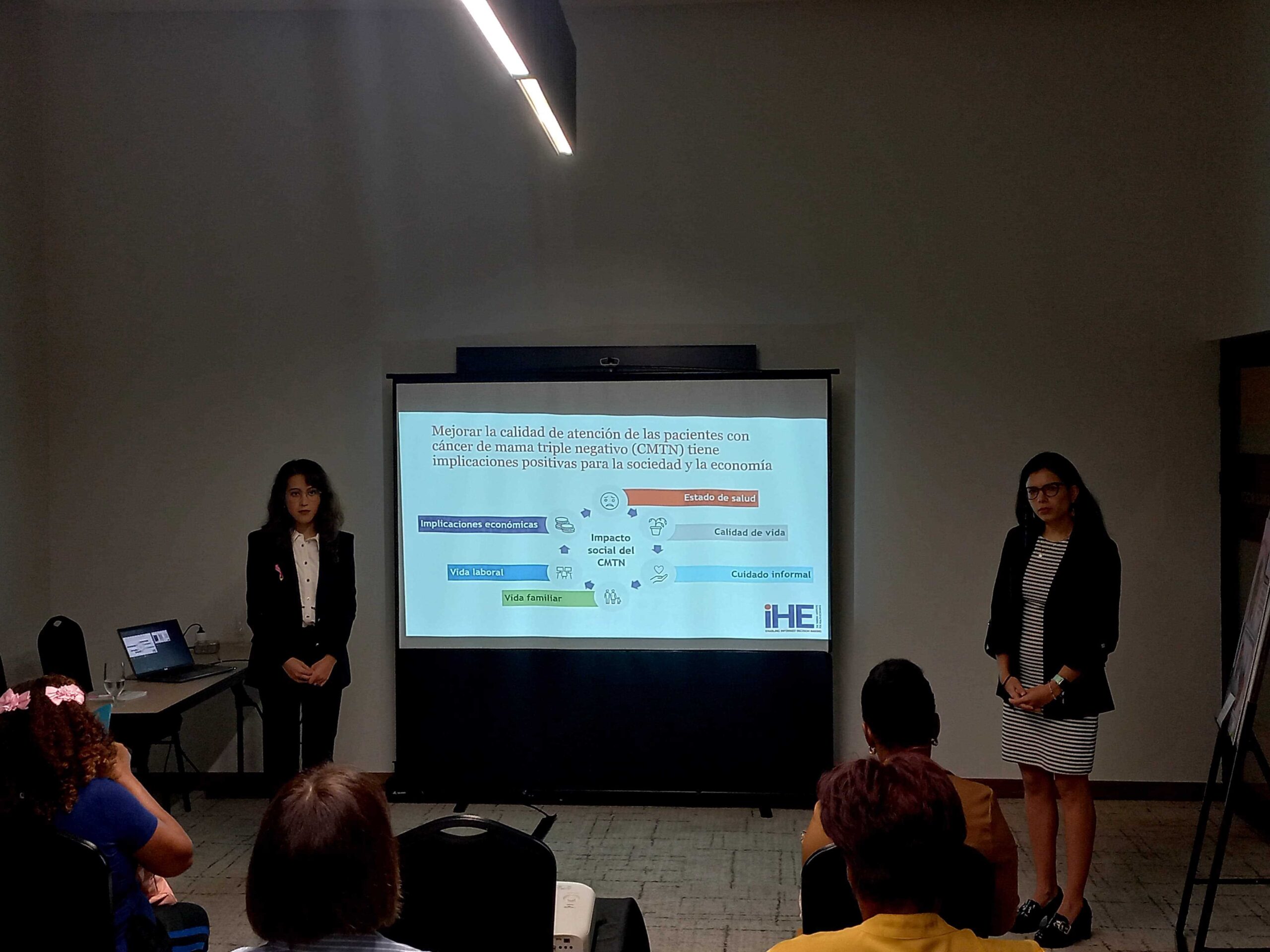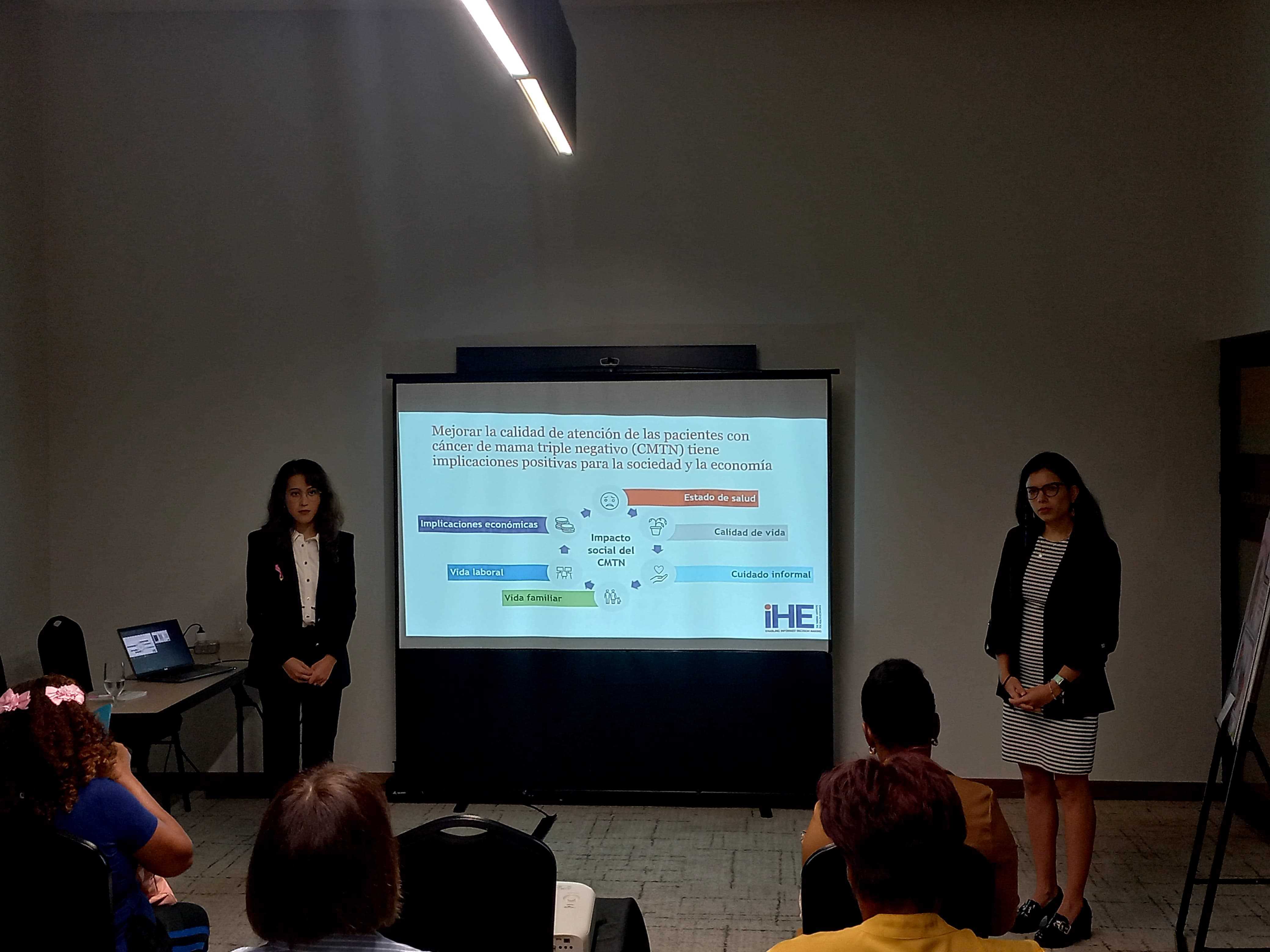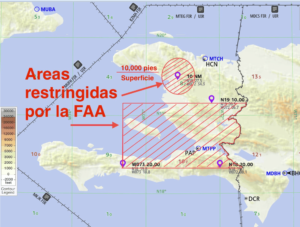
The Dominican Republic shows a significant challenge regarding diagnosis early of cancer mother. In 2022, the country showed a rate of incidence and mortality of 59 and 26 cases per 100 thousand women, respectively, registering one of the rates of mortality highest in Latin America.
14% of cases of cancer of mother They are diagnosed in stage I, 28% in stage II, 43% in stage III, and 14% in stage IV. This means that 43% of the cases in the Dominican Republic are diagnosed in the stadiums I and II, which are the earliest phases of the disease, while 57% are done in the most advanced stages.
This is what he indicated Andrea apple treeMexican economist with a master’s degree in Public Health, who works for the Swedish Institute for Health Research (IHE), in charge of presenting the report “Improving outcomes for women with cancer of mother Triple negative in Latin America: An extended analysis.
apple tree explained that the cancer of mother is made up of several subtypes different that differ in their characteristics biological. One of the subtypes more challenging is the cancer of mother triple negative (CMTN), which accounts for between 13% and 21% of all cases of cancer of mother in the region.
This usually affects slightly younger women and the tumors tend to grow more quickly compared to other types. What makes the detection earlythrough self-examination and screening, is crucial.
According to the report, improvements in detection early of the CMTN would have significant effects not only on the health of the patients, but also in the economysince the cost of treatment would decrease. On average, treating a patient in stage I costs about $13,179, while in stage IV, costs amount to $28,910.

Additionally, more women could continue working during their treatment initial stage or resume work activities after finishing it, given that the symptoms in the early stages of the cancer They are less severe.
The rate of incidence of cancer of mother in Latin America it increased from 33 cases per 100,000 women in 1995 to 70 cases per 100,000 women in 2022.
Lack of staff of health
The IHE report highlights the need to introduce innovations therapeuticstrengthen the detection early and improve clinical care.
The Dominican Republic faces a lack of nurses and doctorsas well as a pronounced disparity in its geographical distribution.
Data from the National Health Service (SNS) in 2019 reveal that, while in the Northeast region there were 17.5 doctors For every 10,000 inhabitants, the figure dropped to only 12.1 in the Valdesia region. In the case of the nursesthe density was 7.2 per 10,000 inhabitants in the Enriquillo region, compared to a marked contrast of just 2.1 in the Eastern region.
On the other hand, the availability of staff medical and nursing is low, with only one doctor and one nurse or midwife per 1,000 inhabitants. This proportion is significantly lower than that of other countries in the region, where the average is three doctors and 10 nurses per 1,000 inhabitants.
Another aspect touched by apple tree was that of the limitations of the coverage sanitarywhich covers 80% of expenses on medical consultations, surgeries, radiotherapy and chemotherapy for serious diseases such as cancer of motherand 70% for medications for outpatient use.
The economist recalled that the treatment Optimum TNBC varies depending on the stage of the disease and the characteristics of the tumor.
“A plan of treatment It must be prepared by a multidisciplinary team that includes at least one radiologist and radiotherapist. pathologist, surgeon, medical oncologist, radiation oncologist, healthcare nurse mother and data manager mother“he pointed out.



